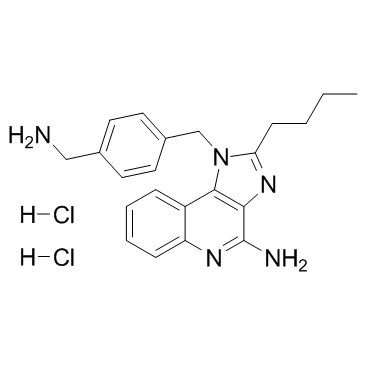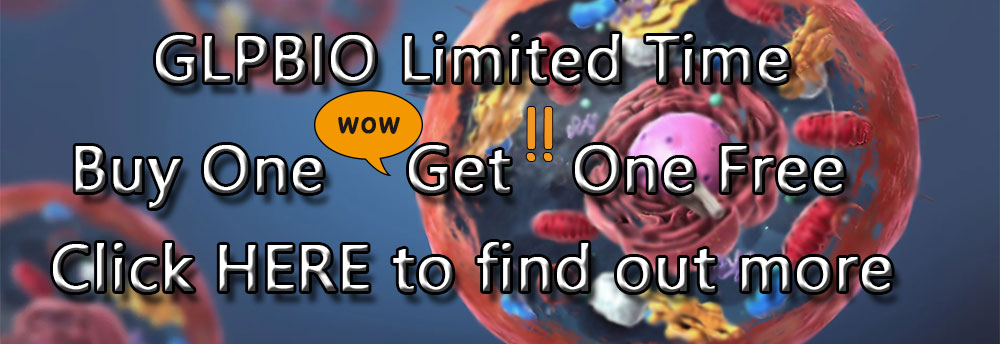TLR7/8 agonist 1 dihydrochloride |
| Catalog No.GC30516 |
A dual agonist of TLR7 and TLR8
Products are for research use only. Not for human use. We do not sell to patients.

Cas No.: 1620278-72-9
Sample solution is provided at 25 µL, 10mM.
TLR7/8 agonist 1 dihydrochloride is a toll-like receptor (TLR7)/TLR8 dual-agonistic imidazoquinoline.
TLR7/8 agonist 1 (Compound 5d) shows prominent immunostimulatory activities. TLR7/8 agonist 1 serves as a convenient precursor for the covalent attachment of fluorophores without significant loss of activity.TLR7/8 agonist 1 retains TLR7-agonistic activity with an EC50 of 20 nM. TLR7/8 agonist 1 is covalently coupled directly to commercially-available fluorescein isothiocyanate and rhodamine B isothiocyanate[1]. TLR7/8 agonist 1 (Compound 1) shows substantially different agonistic potencies in human TLR7 (50 nM) and TLR8 (55 nM) primary screens[2].
[1]. Shukla NM, et al. Syntheses of fluorescent imidazoquinoline conjugates as probes of Toll-like receptor 7. Bioorg Med Chem Lett. 2010 Nov 15;20(22):6384-6. [2]. Beesu M, et al. Structure-Based Design of Human TLR8-Specific Agonists with Augmented Potency and Adjuvanticity. J Med Chem. 2015 Oct 8;58(19):7833-49.
Average Rating: 5 (Based on Reviews and 3 reference(s) in Google Scholar.)
GLPBIO products are for RESEARCH USE ONLY. Please make sure your review or question is research based.
Required fields are marked with *




















